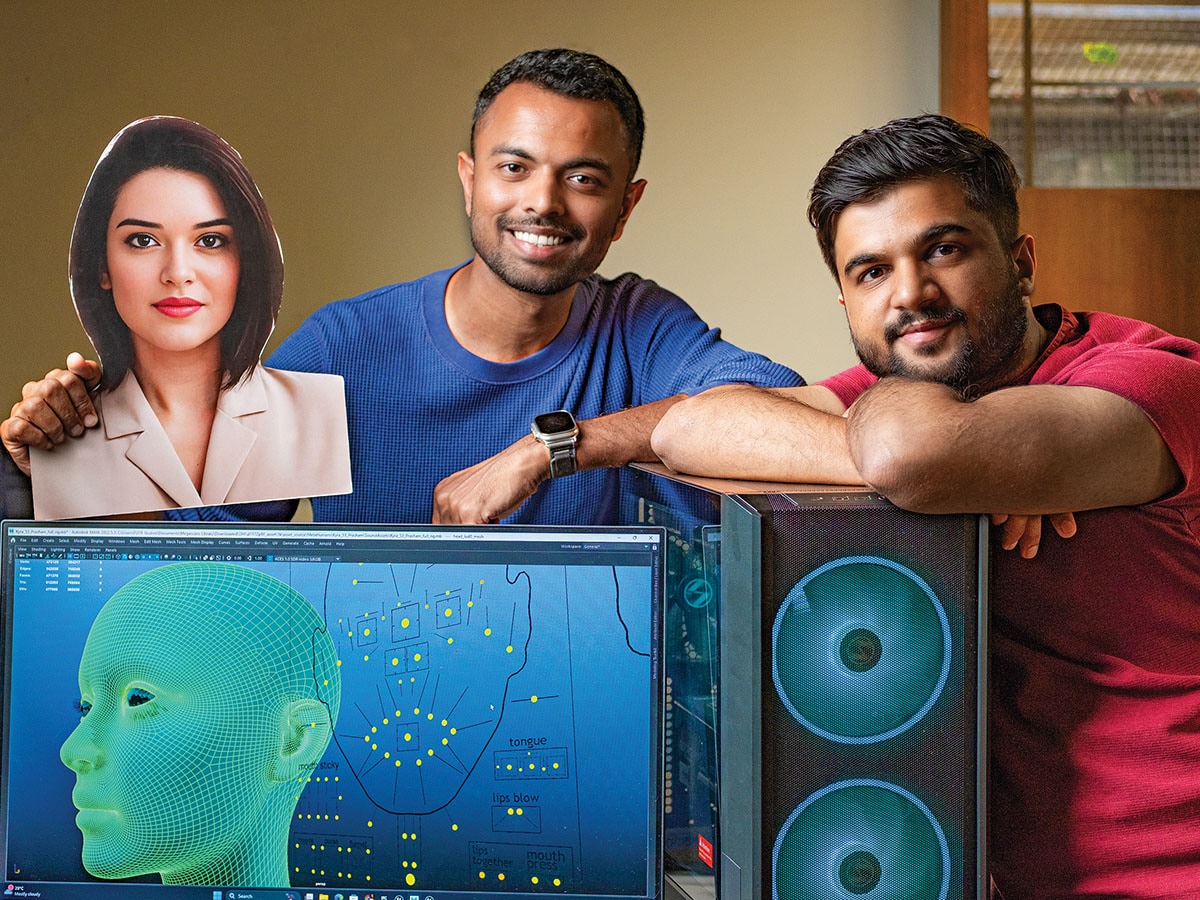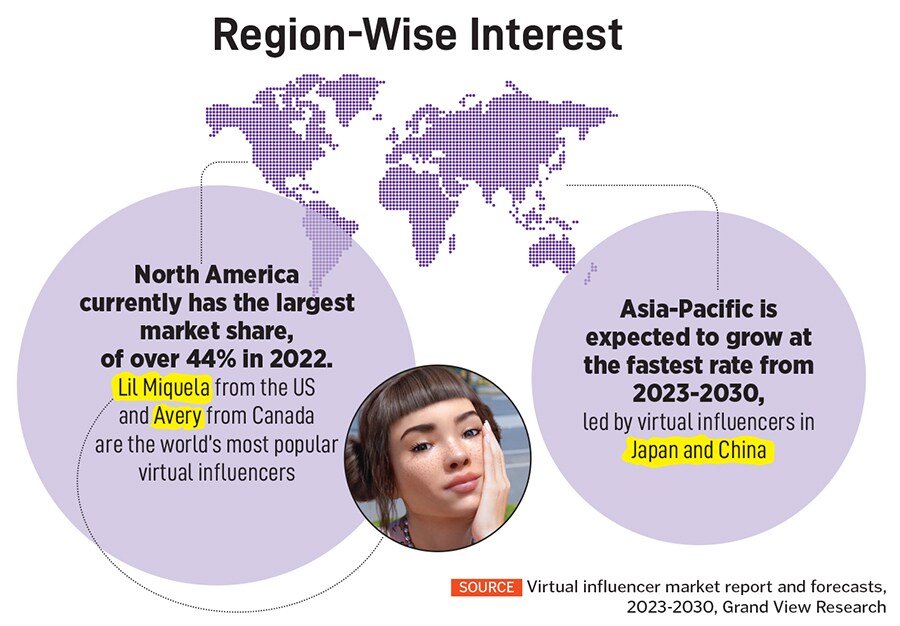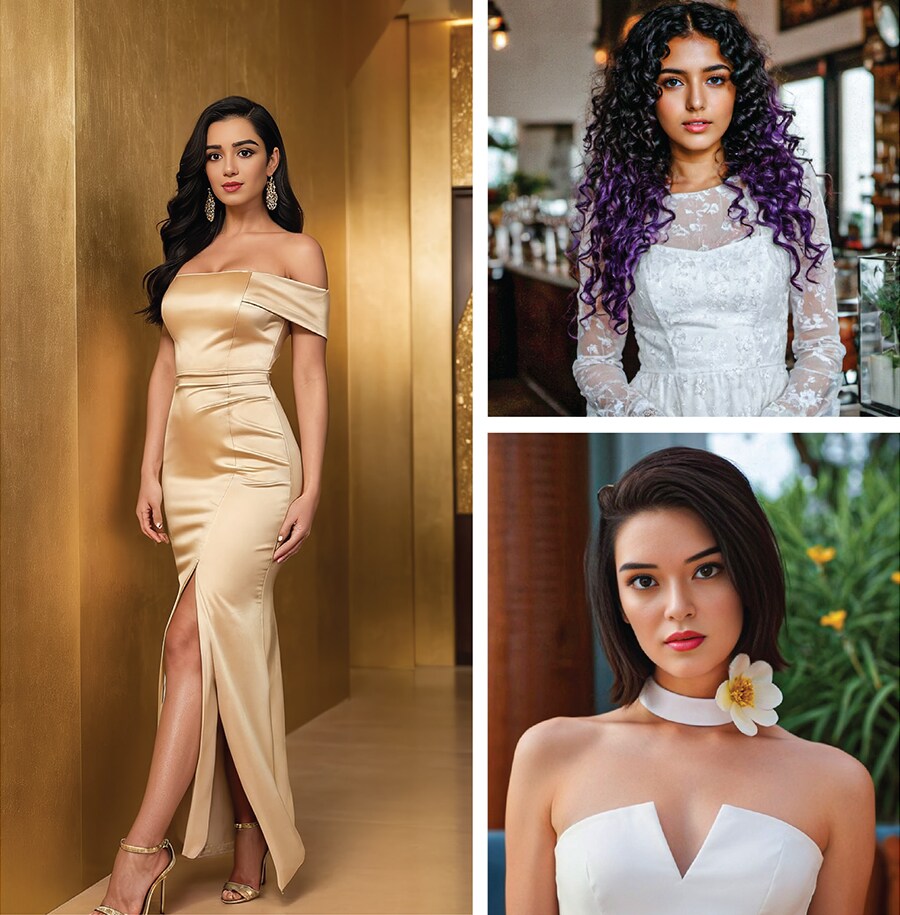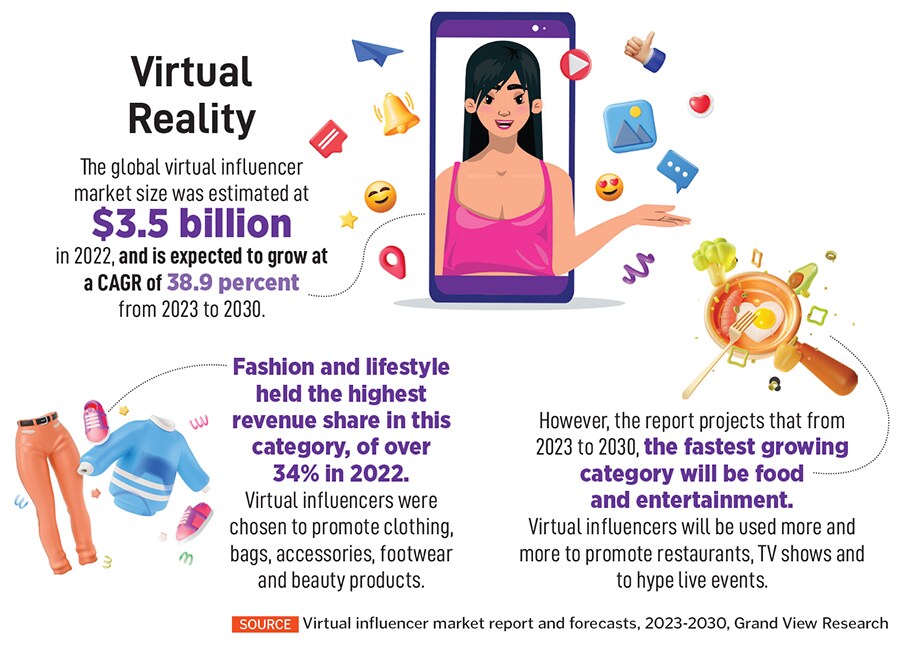What is driving the AI influencer trend?
A growing tribe of virtual influencers, generated using AI and 3D technology, is gaining ground in India, raking in as much marketing spend as human influencers do. Why are brands choosing to engage with them, and what are the ethical concerns
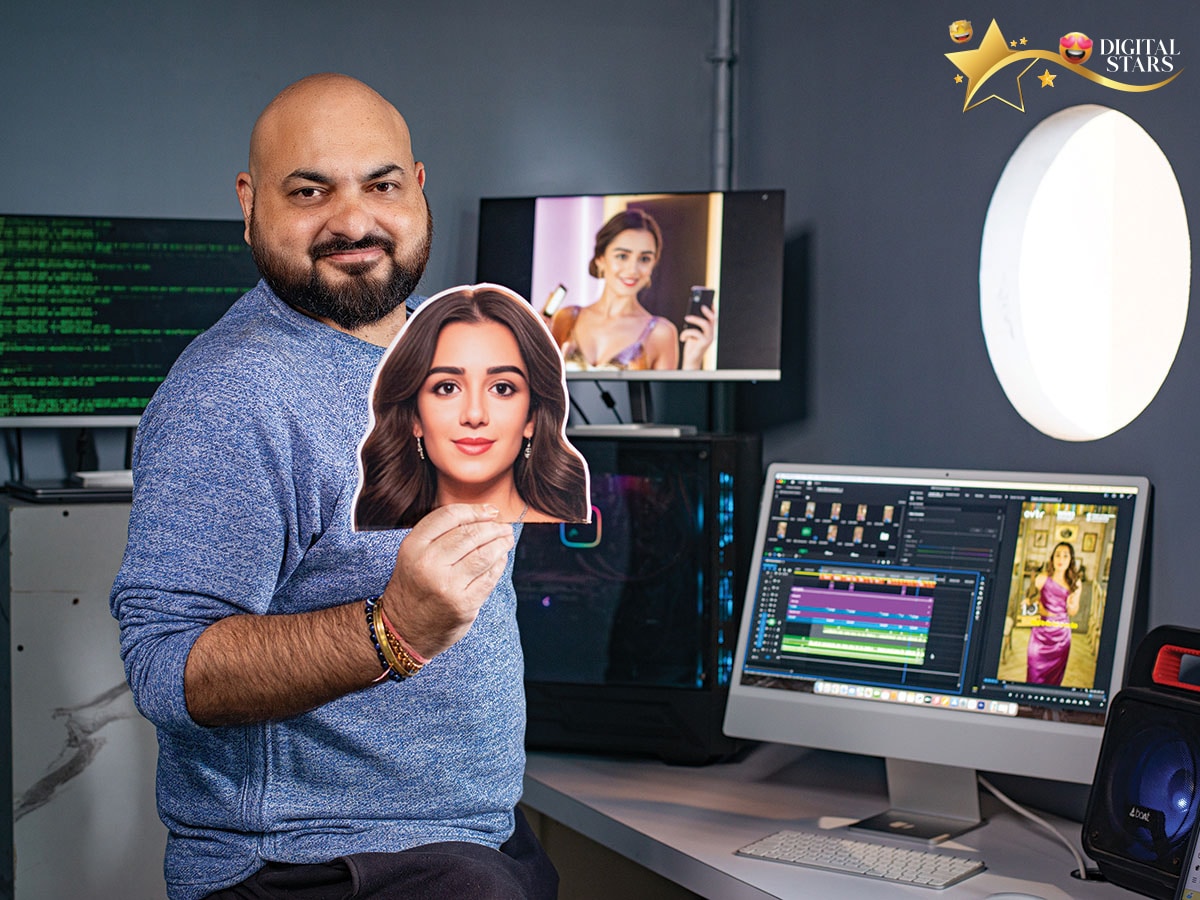 Abhishek Razdan, co-founder and CEO, AVTR Meta Labs, which created influencer Naina
Image: Bajirao Pawar for Forbes India
Abhishek Razdan, co-founder and CEO, AVTR Meta Labs, which created influencer Naina
Image: Bajirao Pawar for Forbes India
She’s in Egypt one moment, and zooming off to space the next. She’s doing a ‘Khatron ke Khiladi’ task underwater today, and starring in an action film tomorrow. She’s showing off her new smart glasses, a Met Gala 2024 couture look, even a traditional Onam sari—Meet Kyra, the influencer who doesn’t exist.
Kyra is part of a small but growing tribe of ‘virtual’ influencers. This means that they are fictional characters, generated using artificial intelligence (AI) and CGI (computer-generated imagery), built to have personas, back-stories and specialties. What’s real, however, is the marketing moolah they can rake in.
Researchers at the Copenhagen-based ‘Influencer Marketing Hub’, which specialises in guides and reports on global social media and influencer marketing trends, found themselves surprised. In 2023, they added a new question to their ‘State of Influencer Marketing Benchmarking Report’, and noted that a whopping 60.4 percent of respondents had used virtual influencers. A year on, that number has risen to 62.2 percent.
A study in the US found that 58 percent of respondents followed a virtual influencer, the report notes. “It should come as no surprise that brands have taken notice of this virtual influencer trend and want to make financial arrangements with (the representatives of) these virtual influencers,” it states.
For a single video, a leading digital influencer could quote anywhere between ₹5 lakh and ₹10 lakh, at par with real, human content creators. Kyra, for instance, has 260,000 followers on Instagram and 103,000 on YouTube, and some of her popular brand-partnership videos have views that clock up to 74 million.
(This story appears in the 18 October, 2024 issue of Forbes India. To visit our Archives, click here.)




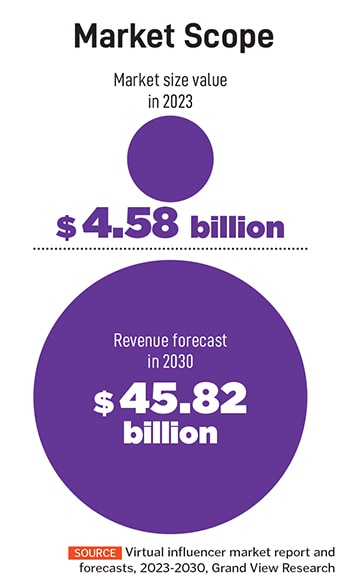 Second, virtual influencers offer a whole lot of adaptability: They don’t age, can speak multiple languages, and can be made to travel to any place at no extra cost. “They are also available whenever you want to use them in a campaign,” he adds. “Brands can potentially use virtual influencers for campaigns in different regions, instead of identifying and engaging different ones in different markets.”
Second, virtual influencers offer a whole lot of adaptability: They don’t age, can speak multiple languages, and can be made to travel to any place at no extra cost. “They are also available whenever you want to use them in a campaign,” he adds. “Brands can potentially use virtual influencers for campaigns in different regions, instead of identifying and engaging different ones in different markets.” 